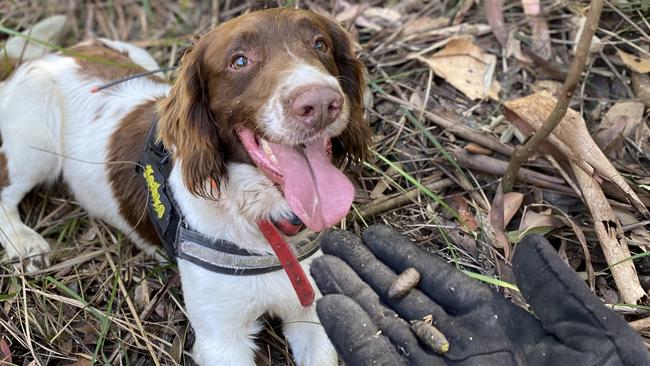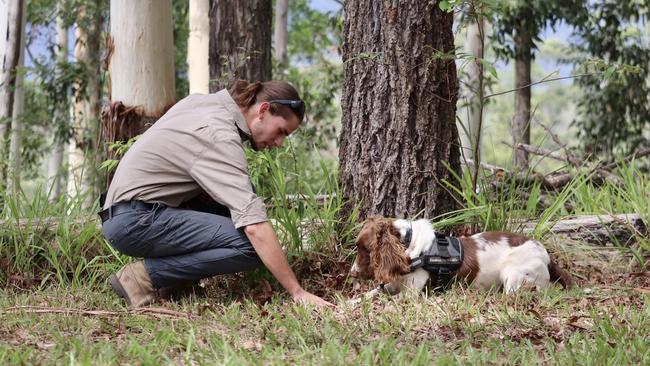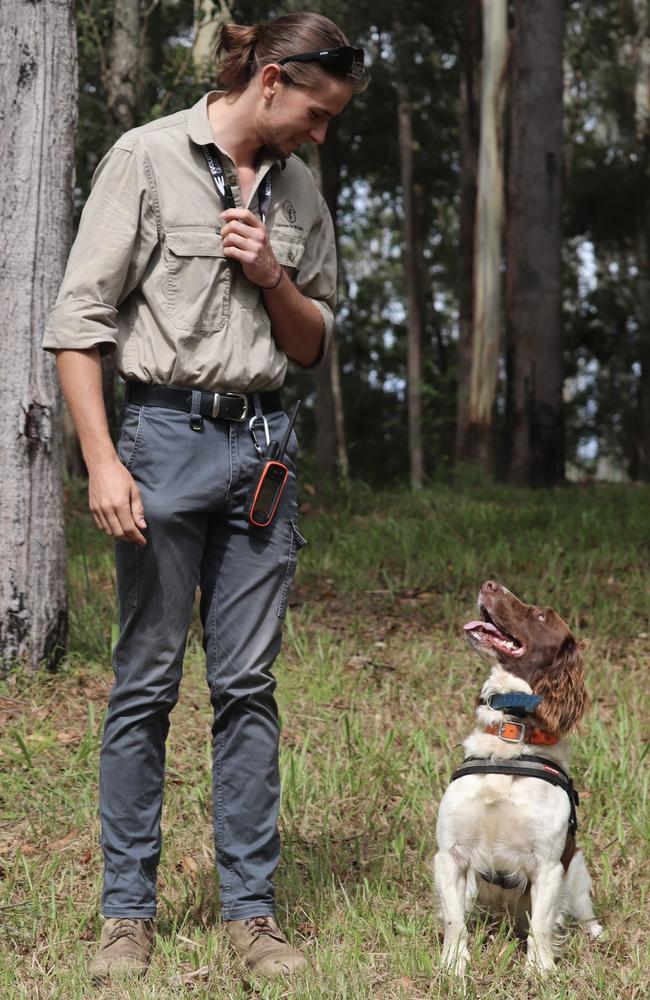Max prepares to pop his uniform as more funding means more koala scats to map
“He’ll work all day for a tennis ball”: When Max dons his uniform he knows he’s off for fun times disguised as koala conservation efforts. The little fellow and his handler say they have the best jobs in the world.
NSW
Don't miss out on the headlines from NSW. Followed categories will be added to My News.
Most dogs get excited when they know they are off for a walk, but for working dog Max there’s no lead as a signal — he gets excited when he gets dressed in his work uniform.
The English springer spaniel loves the signal that lets him know he’s about to start a day’s work looking for koala poo.
“He has a jacket to wear that helps identify him and he also wear a GPS and VA VHF tracking collar,” said Canines for Wildlife handler Jack Nesbitt.

Since 2019 Max and Mr Nesbitt have collected 722 records of koala presence in the Coffs Harbour Local Government Area.
Now thanks to a funding boost from the City of Coffs Harbour’s Environmental Levy, the pair will target the peri-urban areas of City Hill, Coffs Creek, the Botanic Gardens and Korora.
While Max’s work on the coastal plateaus and forests is important for koala preservation, it’s all part of a fun day in his eyes.
“He is a very cheap employee, because he’ll work all day for a tennis ball,” said Mr Nesbitt.
Max’s job is to find koala poo known as scat, and then signal the find with a nose touch or lay down.

The scats can identify the sex of the koala and the individual’s movements including one female koala that travelled in mysterious ways.
“One koala in the Toormina Boambee area surprised everyone by getting from near the boat ramp at High Tech drive to Toormina High School without showing any evidence of having used the expected koala corridors,” Mr Nesbitt said.
Collecting the scats helps to identify koala population growth, genetic diversity, and movement patterns to inform conservation efforts including for the proposed Great Koala National Park.
The data gets fed into BioNet, the central database accessed by national parks, the environmental department and State Forest.

“We partner closely with Coffs council as well, for prospective developments and for their restoration works when they’re maintaining their crown reserve and parks,” Mr Nesbitt said.
Mr Nesbitt loves his job much as Max and was inspired by volunteering with his parents who had a similar role.
‘When I was young they used detection dogs for threatened species in the Northern Rivers working on the eastern bristle bird”, he said.
More Coverage
Originally published as Max prepares to pop his uniform as more funding means more koala scats to map




